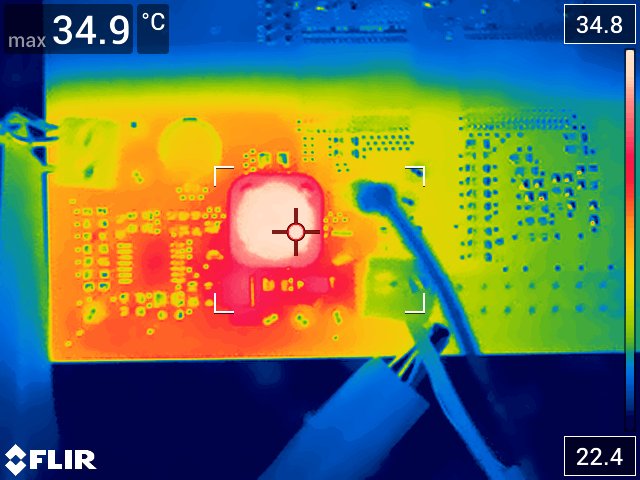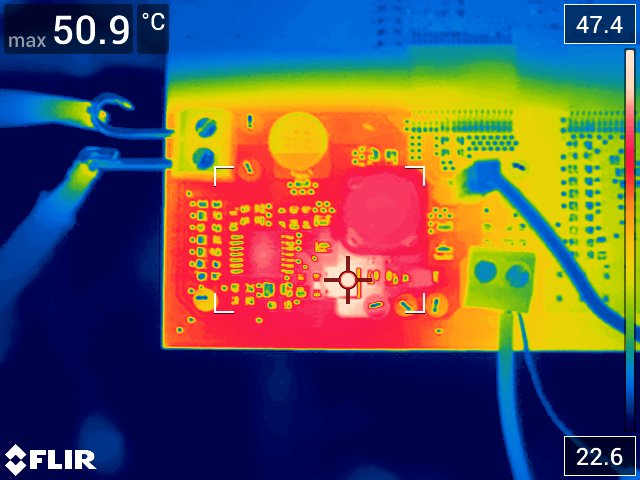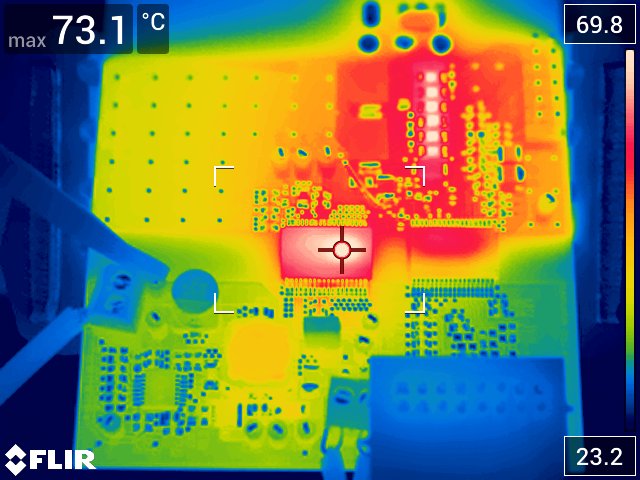TIDT256A March 2022 – March 2022
2.4 Thermal Images
Thermal images are shown in the following figures.

VIN = 18 VIN, VOUT = 24 VOUT at 130 mA
The SEPIC inductor is the hottest item.
Figure 2-7 SEPIC Thermals at 445-kHz Switching Frequency
VIN = 18V, VOUT = 24 VOUT at 130 mA
The SEPIC switch is the hottest item.
Figure 2-8 SEPIC Thermals at 2-MHz Switching Frequency
12 VIN to SEPIC, 24 V
from SEPIC, +15 V, –5 V from isolated DC/DC. Isolated driver run at 40 kHz, 50%
duty into 0.1-μF load for 2 μC per cycle or 80 mA, 1.6-W average current,
power draw from isolated DC/DC. Ambient 21°C to 23°C with no fan.
Isolated DC/DC at 73°C, gate
driver at 56°C and gate drive resistors up to 76°C
Figure 2-9 Isolated DC/DC and Driver
Thermals at 40 kHz, 50% Duty, PWM 100 nF on Gate